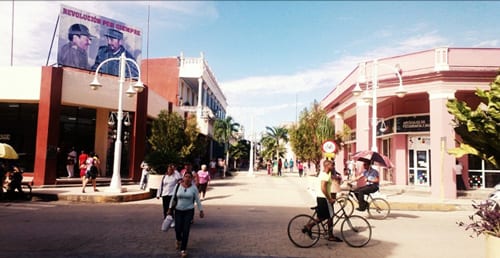A Visit to Ciego de Avila, Cuba
Photo feature by Ernesto Gonzalez Diaz
 HAVANA TIMES — Ciego de Avila, one of Cuba’s central provinces, is located around 400 kilometers south-east of Havana. In recent years, the city (currently reporting 100,000 inhabitants) has witnessed notable tourism development, chiefly due to the hotel infrastructure created in its north-laying keys.
HAVANA TIMES — Ciego de Avila, one of Cuba’s central provinces, is located around 400 kilometers south-east of Havana. In recent years, the city (currently reporting 100,000 inhabitants) has witnessed notable tourism development, chiefly due to the hotel infrastructure created in its north-laying keys.
Cayo Coco, Cayo Guillermo and other keys that make up the Jardines del Rey archipelago are excellent sun and sea destinations for Cuban and foreign visitors.
Ciego de Avila is also the country’s largest grower of pineapples and other fruits, such as guava, mango and coconut.
In addition, the province is home to Cuba’s national baseball champion and the team that is represent the country at the Caribbean Series in the first days of February next year. The photos below were taken in the capital’s downtown area, chiefly in the pedestrian boulevard.
Click on the thumbnails below to view all the photos in this gallery. On your PC or laptop, you can use the directional arrows on the keyboard to move within the gallery. On cell phones use the keys on the screen.



























Thanks for the fotos, Ernesto! They brought back many happy memories of my last visit to Ciego de Avila, in 2012. Hope to return my next trip. (This last trip I opted to spend more time in Sancti Spiritus). Although most tourists hang out at the A.I.’s on the cayos of the north coast, I prefer the more laid back atmosphere of Ciego de Avila. Enjoyed strolling up-and-down the “boulevar,” the Parque Marti and the Parque de la Ciudad. Alas! My favorite restaurantm, a Palmares joint a block from the Parque Marti, no longer exists). Was impressed by the Museo Provincial’s diorama/scale model of the La Trocha and the quiet, idiosyncratic Museo de Artes Decorativas, and just wandering the streets between the “boulevar” and the train station. Stayed at the Hotel Ciego de Avila (pictured in the last foto), on the edge of the Parque de la Ciudad and overlooking Lago la Turbina–a 20 minute walk into town, where I paid only $18/noc for a room on the top floor and was far enough away from the throbbing reggaton beats emanating from “La Batanga” nightclub to sleep Friday and Saturday nights undisturbed.
En la calle Honorato Castillo vivio mi Tia y el esposo que tenian 105 caballerias de tierra y molian la cana para el Central Moron, vino el Castrismo y le dejaron 35 caballerías y vino después el robalotodo de los Hnos. Castro y se lo quitaron todo y todavia sus dos hijos que son dos primos mío usaban :el primo boina verde y la prima ni se lo que era Ella pues no tuvimos mas comunicación desde que empece a prepararme para salir hacia los Estados Unidos.